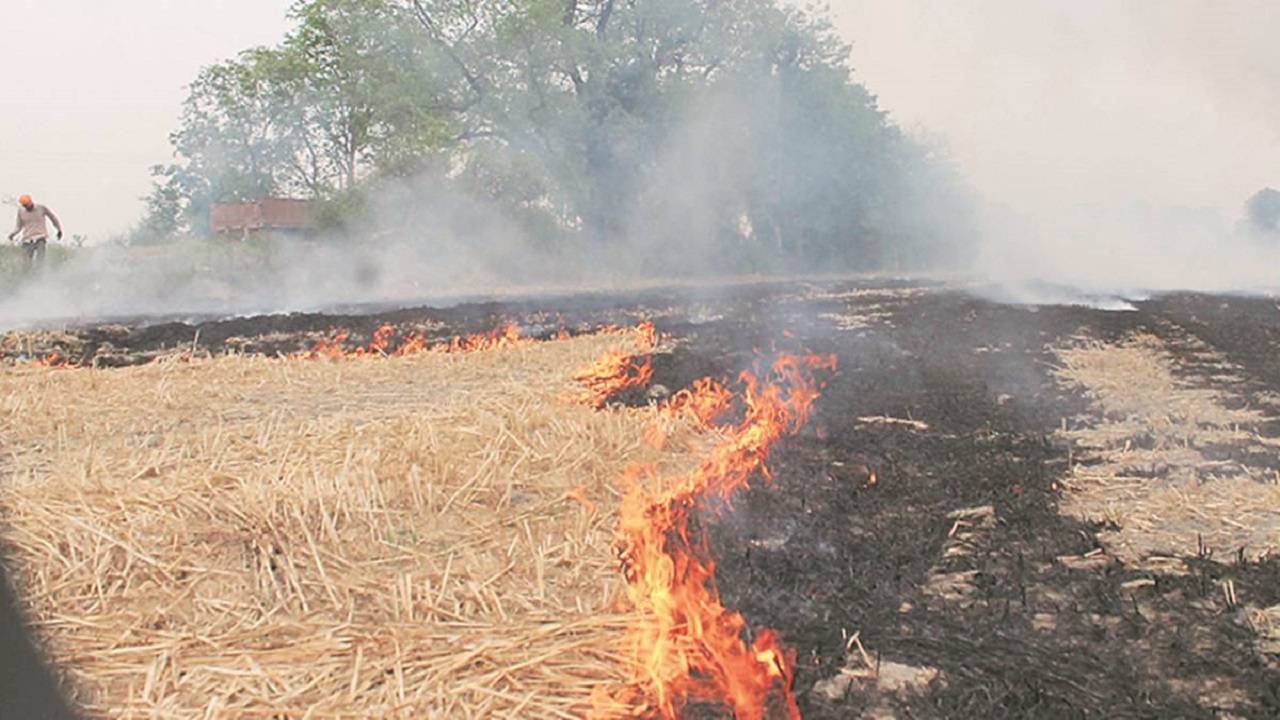
Punjab's crops have caught fire once again as the wheat harvest nears completion. From April 6 to May 15, the state has already registered 9,247 cases of stubble burning.
The figures are higher than the 7,808 cases of stubble burning recorded in 2021 but are roughly 34% less than the 14,117 agricultural fires reported in the same period last year.
Punjab reported 507 stubble-burning cases on May 15 as compared to 47 fires on the same day last year, signalling that farm fires will persist this season for a few more days. Due to hail and unpredictable heavy rainfall this year, harvesting was put off.
As per the Punjab Pollution Control Board, the greater number of fires was reported from the Moga (932) followed by Gurdaspur (770), Amritsar (710), Firozpur (685), Ludhiana (624), Sangrur (614), Bathinda (559), Barnala (527), Muktsar (521).
Rupnagar reported a lesser number of fires — 11. Mohali (18), Nawanshahr (62), Pathankot (76), Fatehgarh Sahib (83), and Malerkotla (161) are among the districts that recorded relatively lower numbers.
The highest number of stubble-burning cases reported were 1,554 in a single day this season was recorded on May 11, followed by May 6 (1, 221), May 13 (1,113), May 10 (1,019), May 5 (892), May 12 (752) and May 8 (604).
According to experts in agriculture, farmers are just burning the top layer of the roots and not the entire wheat stubble. Farmers leave a few centimetres of the upper part of the roots in the field after using the stubble to make fodder, and then setting that portion on fire.
Because of its nutritional value, ‘Turdi’ (dry fodder) made from wheat stubble is reckoned as the best for cattle.
According to Dr Amrik Singh, district training officer, Gurdaspur, Department of Agriculture, with a little push from the government, the burning can be avoided easily. The field fires burn the soil, organic matter, and various soil-friendly insects. In addition to producing large volumes of carbon monoxide, carbon dioxide, and black carbon, it results in the loss of nitrogen, diammonium phosphate (DAP), and potassium and causes environmental contamination. It also impacts soil fertility and agricultural yield.
He continued by saying that after a single or two times through the field plough, mild irrigation can be used to control the remaining stubble.
The National Capital Region includes Punjab, Haryana, Delhi, and parts of Rajasthan and Uttar Pradesh. Last month, the Environment Ministry announced guidelines giving the Commission for Air Quality Management (CAQM) authority to impose environmental compensation on farmers burning stubble in these areas.
A challan will be used to collect the environmental compensation, which will then be placed into the account of the corresponding state's pollution control board or committee. Also, the certificate stating the amount due will be created and delivered to the official designated by the state government to reclaim the charge as an arrear of land revenue if the negligent farmers fail to pay the environmental compensation within 30 days of receiving the challan.
Keeping the land revenue records the officer will also mark the record with a red entry against the farmer found to have burnt stubble.
















